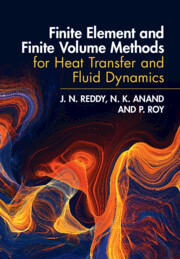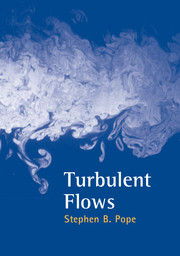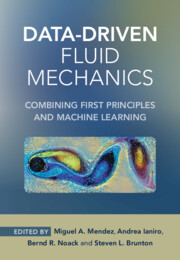Refine search
Actions for selected content:
8126 results in Fluid dynamics and solid mechanics

Finite Element and Finite Volume Methods for Heat Transfer and Fluid Dynamics
-
- Published online:
- 27 January 2023
- Print publication:
- 27 October 2022
-
- Textbook
- Export citation

Turbulent Flows
-
- Published online:
- 20 January 2023
- Print publication:
- 10 August 2000
-
- Book
- Export citation

Data-Driven Fluid Mechanics
- Combining First Principles and Machine Learning
-
- Published online:
- 12 January 2023
- Print publication:
- 02 February 2023
Part I - Fundamentals of Turbulence
-
- Book:
- Physics of Wave Turbulence
- Published online:
- 08 December 2022
- Print publication:
- 22 December 2022, pp 25-26
-
- Chapter
- Export citation
8 - Wave Turbulence in a Compressible Plasma
- from Part II - Wave Turbulence
-
- Book:
- Physics of Wave Turbulence
- Published online:
- 08 December 2022
- Print publication:
- 22 December 2022, pp 205-230
-
- Chapter
- Export citation
Appendix B - Formulary
-
- Book:
- Physics of Wave Turbulence
- Published online:
- 08 December 2022
- Print publication:
- 22 December 2022, pp 270-273
-
- Chapter
- Export citation
Part II - Wave Turbulence
-
- Book:
- Physics of Wave Turbulence
- Published online:
- 08 December 2022
- Print publication:
- 22 December 2022, pp 101-102
-
- Chapter
- Export citation
1 - General Introduction
-
- Book:
- Physics of Wave Turbulence
- Published online:
- 08 December 2022
- Print publication:
- 22 December 2022, pp 1-24
-
- Chapter
-
- You have access
- Export citation
Contents
-
- Book:
- Physics of Wave Turbulence
- Published online:
- 08 December 2022
- Print publication:
- 22 December 2022, pp vii-x
-
- Chapter
- Export citation
3 - Spectral Theory in Hydrodynamics
- from Part I - Fundamentals of Turbulence
-
- Book:
- Physics of Wave Turbulence
- Published online:
- 08 December 2022
- Print publication:
- 22 December 2022, pp 69-100
-
- Chapter
- Export citation
2 - Eddy Turbulence in Hydrodynamics
- from Part I - Fundamentals of Turbulence
-
- Book:
- Physics of Wave Turbulence
- Published online:
- 08 December 2022
- Print publication:
- 22 December 2022, pp 27-68
-
- Chapter
- Export citation
Appendix A - Solutions to the Exercises
-
- Book:
- Physics of Wave Turbulence
- Published online:
- 08 December 2022
- Print publication:
- 22 December 2022, pp 248-269
-
- Chapter
- Export citation
7 - Alfvén Wave Turbulence
- from Part II - Wave Turbulence
-
- Book:
- Physics of Wave Turbulence
- Published online:
- 08 December 2022
- Print publication:
- 22 December 2022, pp 179-204
-
- Chapter
- Export citation
Index
-
- Book:
- Physics of Wave Turbulence
- Published online:
- 08 December 2022
- Print publication:
- 22 December 2022, pp 274-277
-
- Chapter
- Export citation
9 - Gravitational Wave Turbulence
- from Part II - Wave Turbulence
-
- Book:
- Physics of Wave Turbulence
- Published online:
- 08 December 2022
- Print publication:
- 22 December 2022, pp 231-247
-
- Chapter
- Export citation
Dedication
-
- Book:
- Physics of Wave Turbulence
- Published online:
- 08 December 2022
- Print publication:
- 22 December 2022, pp v-vi
-
- Chapter
- Export citation
Frontmatter
-
- Book:
- Physics of Wave Turbulence
- Published online:
- 08 December 2022
- Print publication:
- 22 December 2022, pp i-iv
-
- Chapter
- Export citation
5 - Theory for Capillary Wave Turbulence
- from Part II - Wave Turbulence
-
- Book:
- Physics of Wave Turbulence
- Published online:
- 08 December 2022
- Print publication:
- 22 December 2022, pp 127-154
-
- Chapter
- Export citation
Preface
-
- Book:
- Physics of Wave Turbulence
- Published online:
- 08 December 2022
- Print publication:
- 22 December 2022, pp xi-xii
-
- Chapter
- Export citation
6 - Inertial Wave Turbulence
- from Part II - Wave Turbulence
-
- Book:
- Physics of Wave Turbulence
- Published online:
- 08 December 2022
- Print publication:
- 22 December 2022, pp 155-178
-
- Chapter
- Export citation
